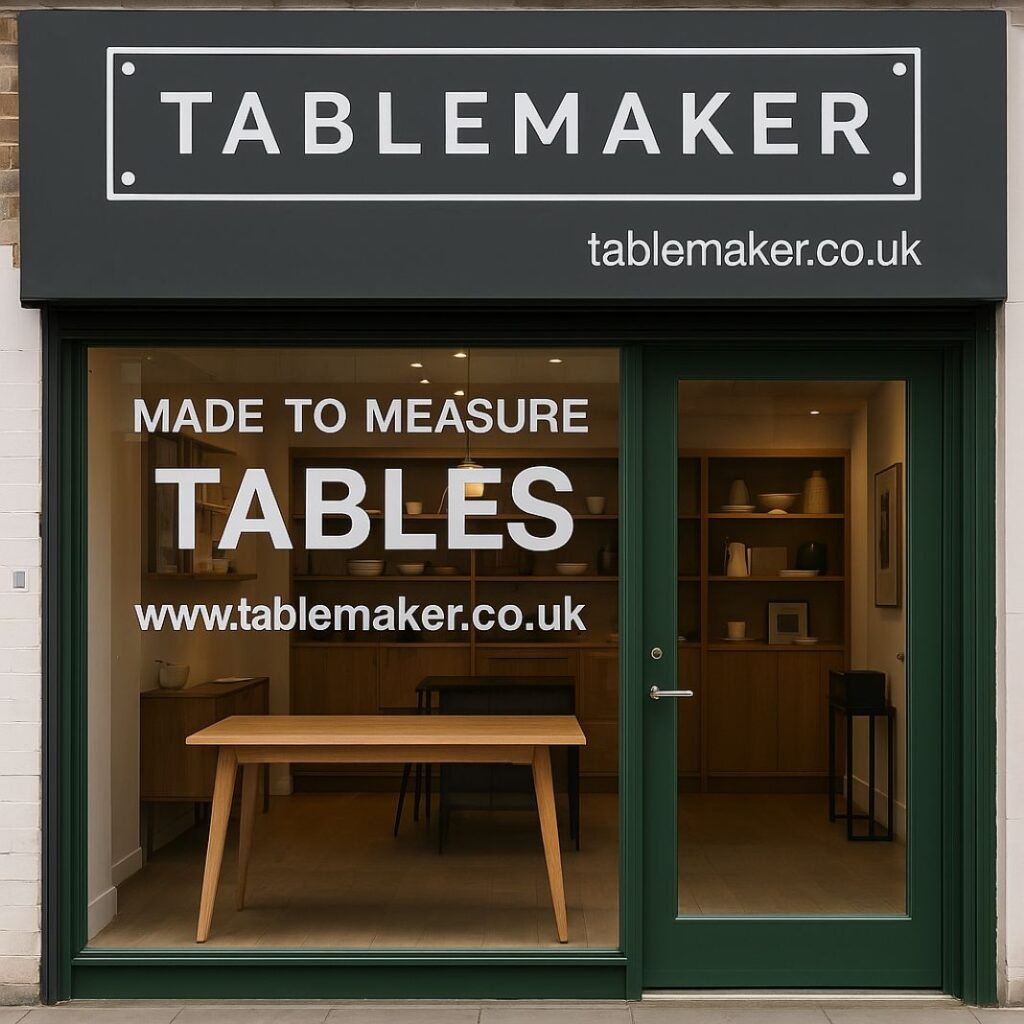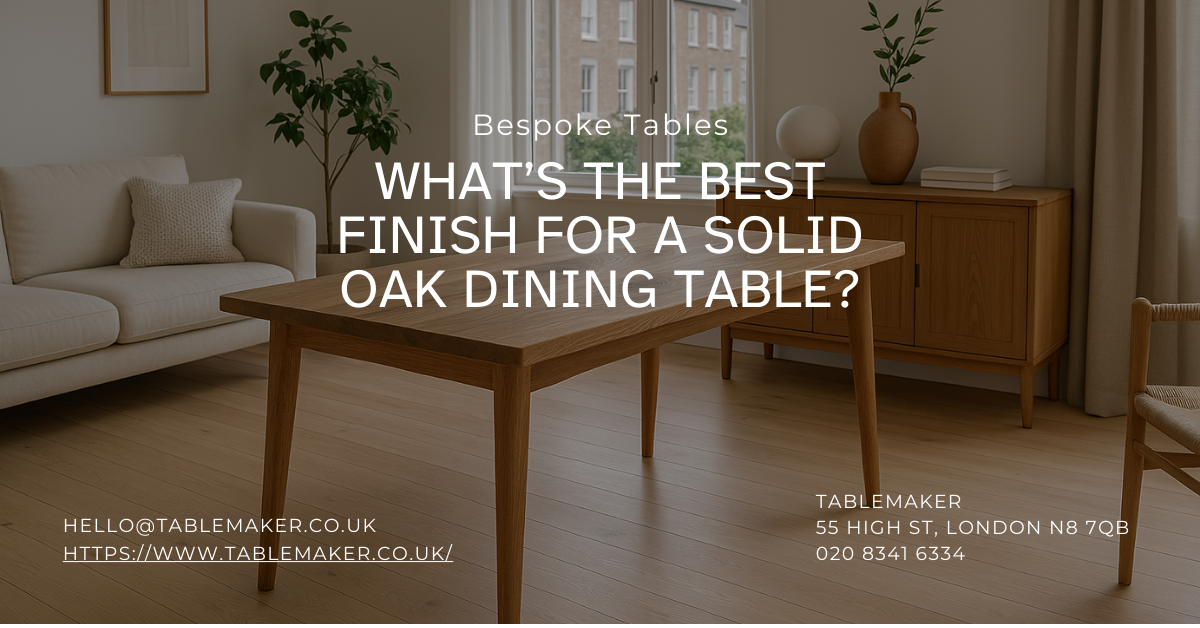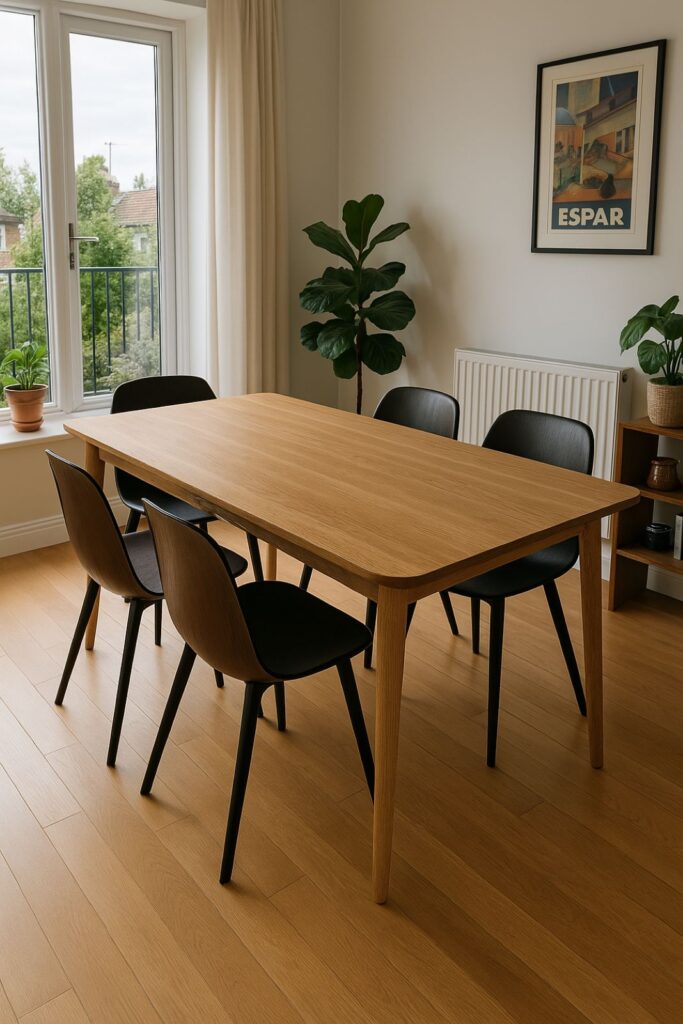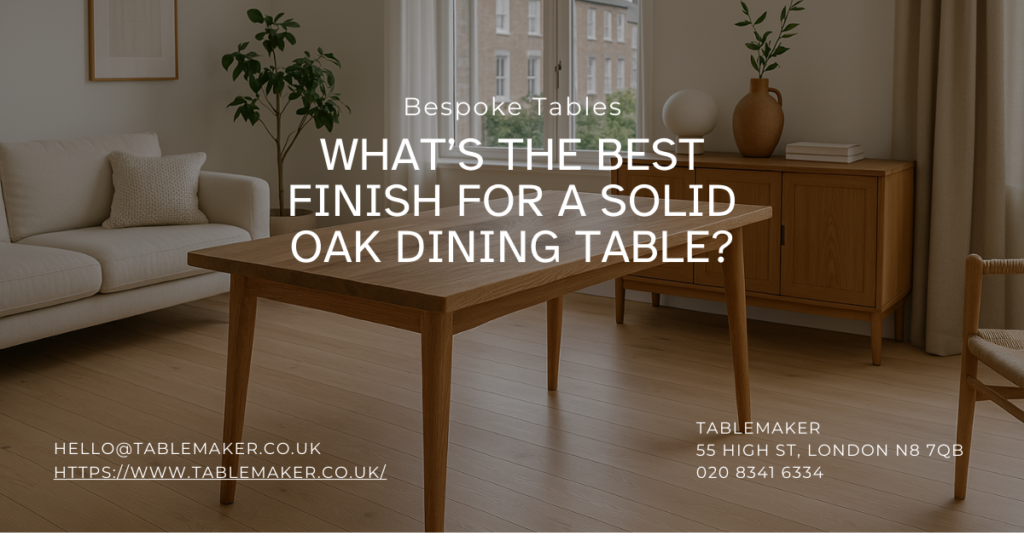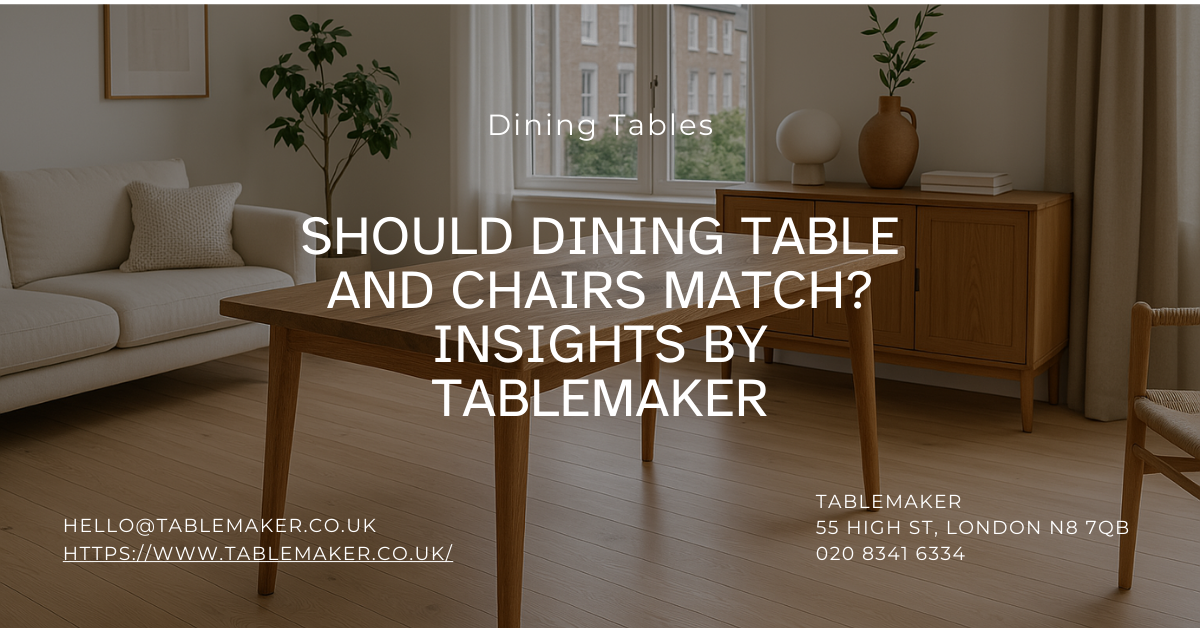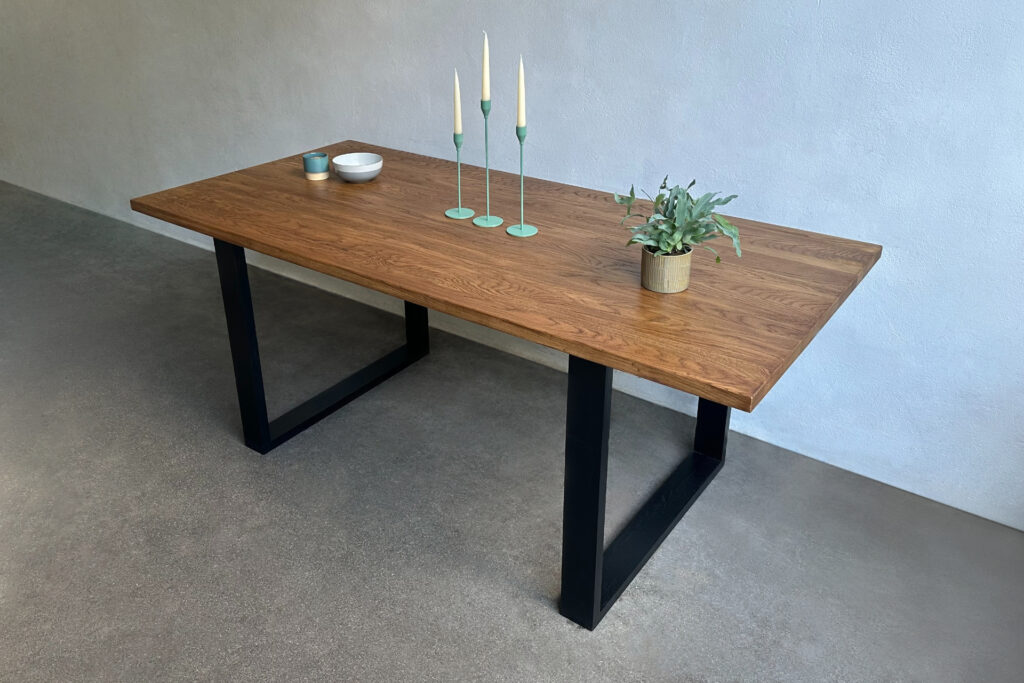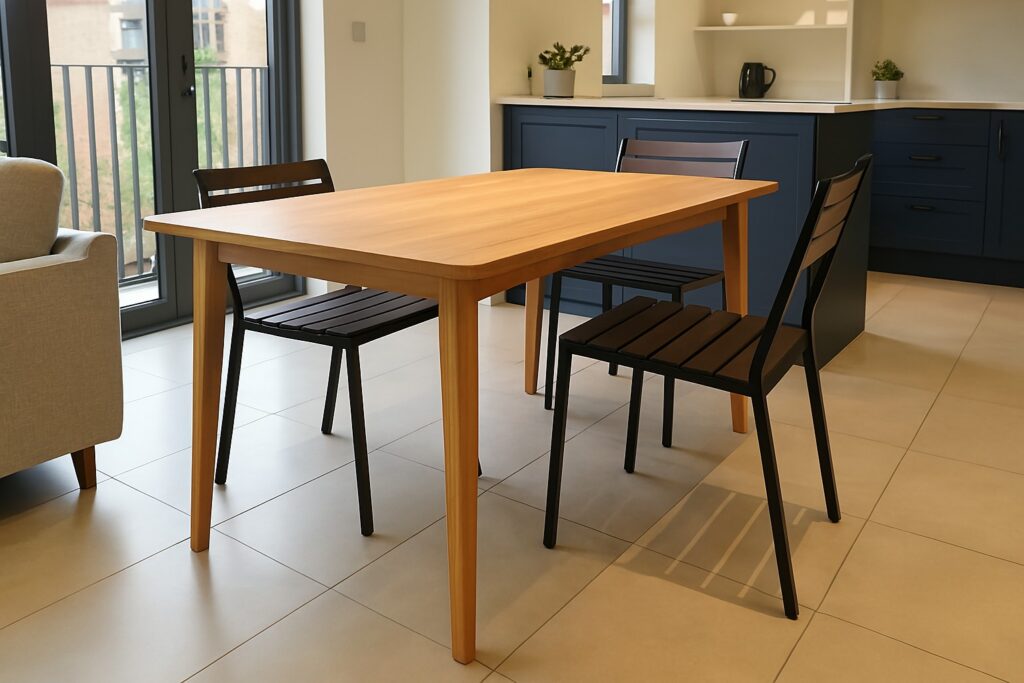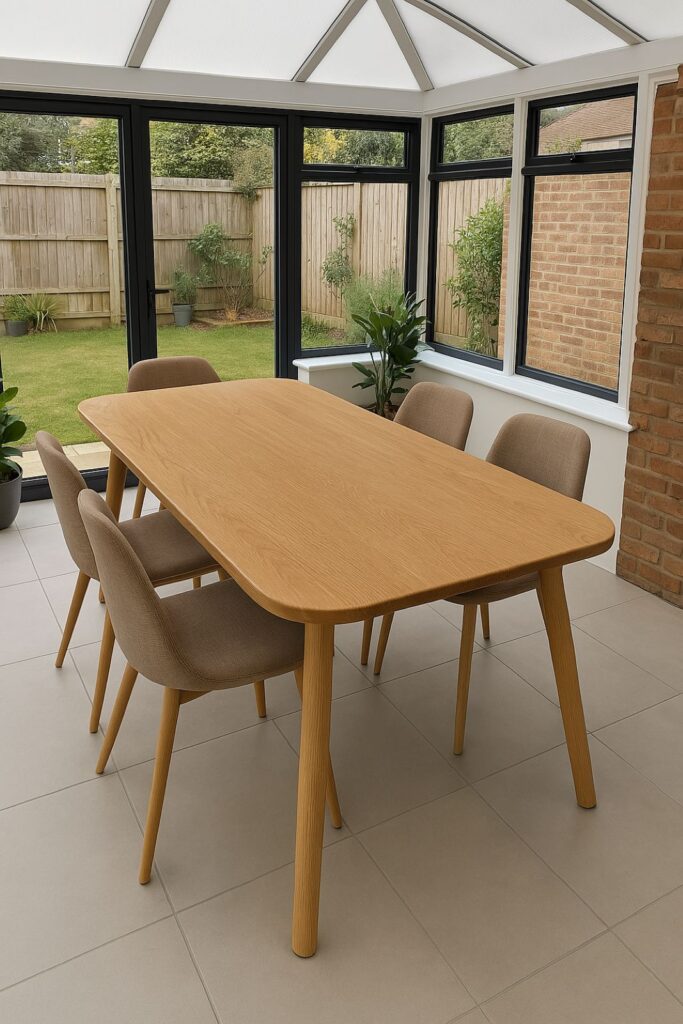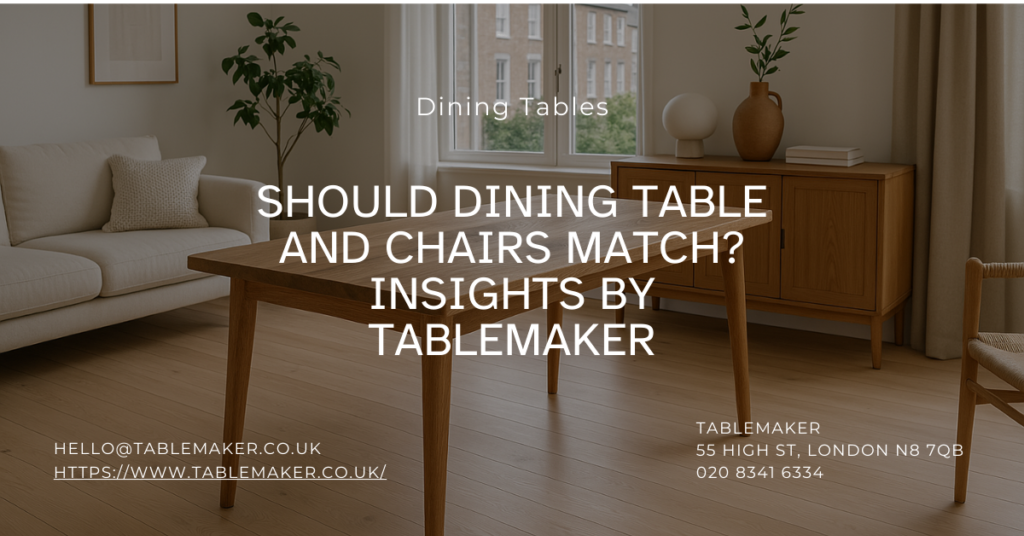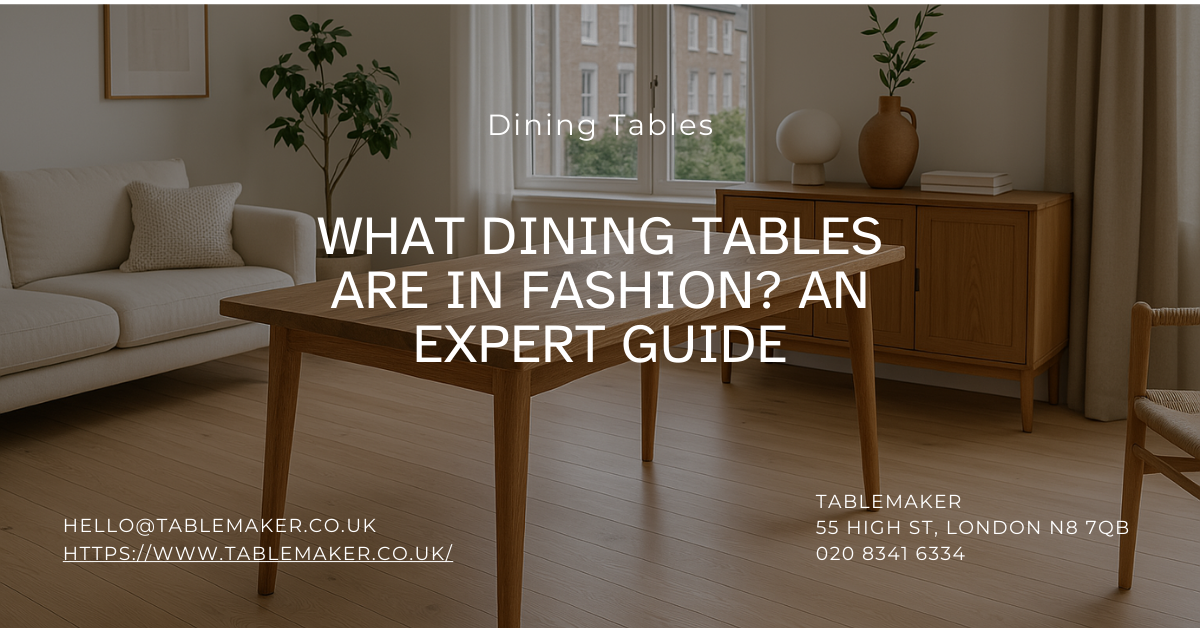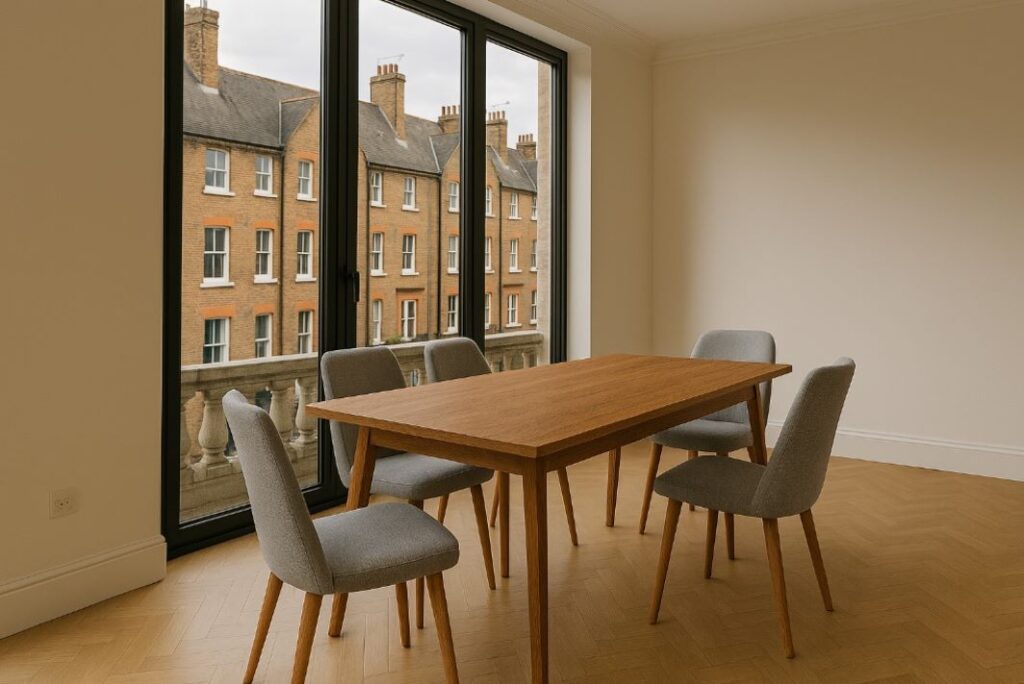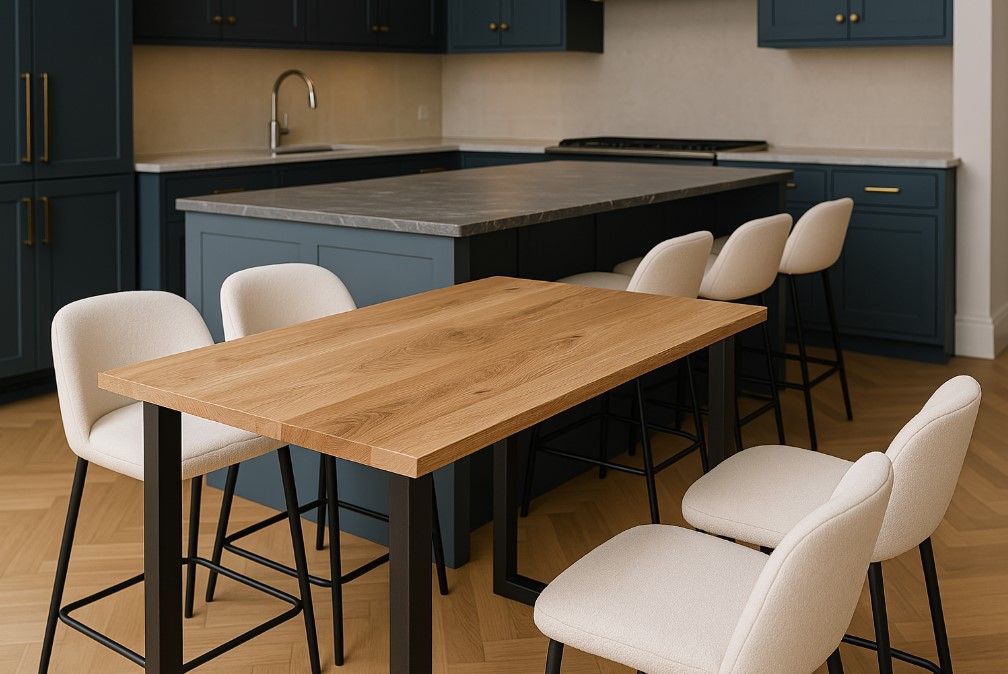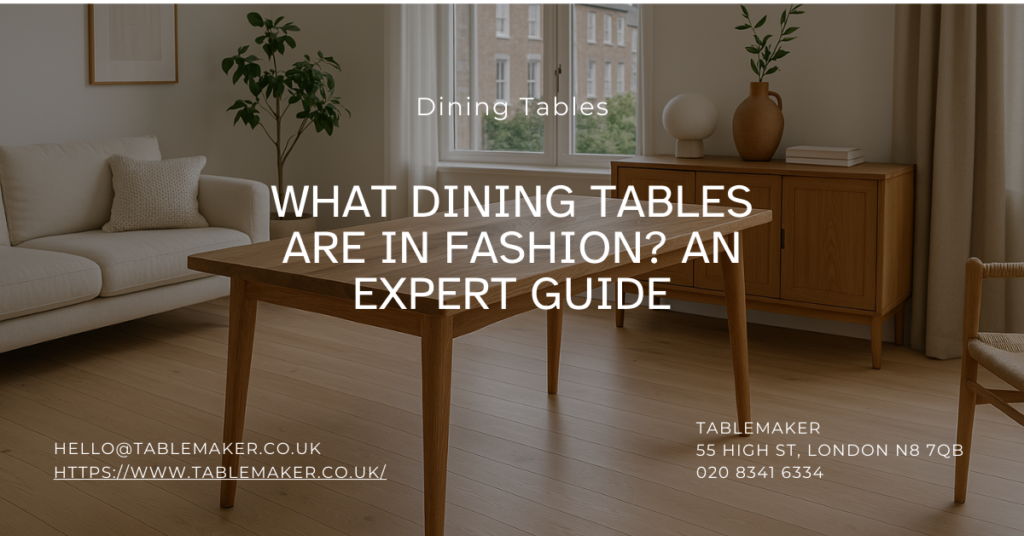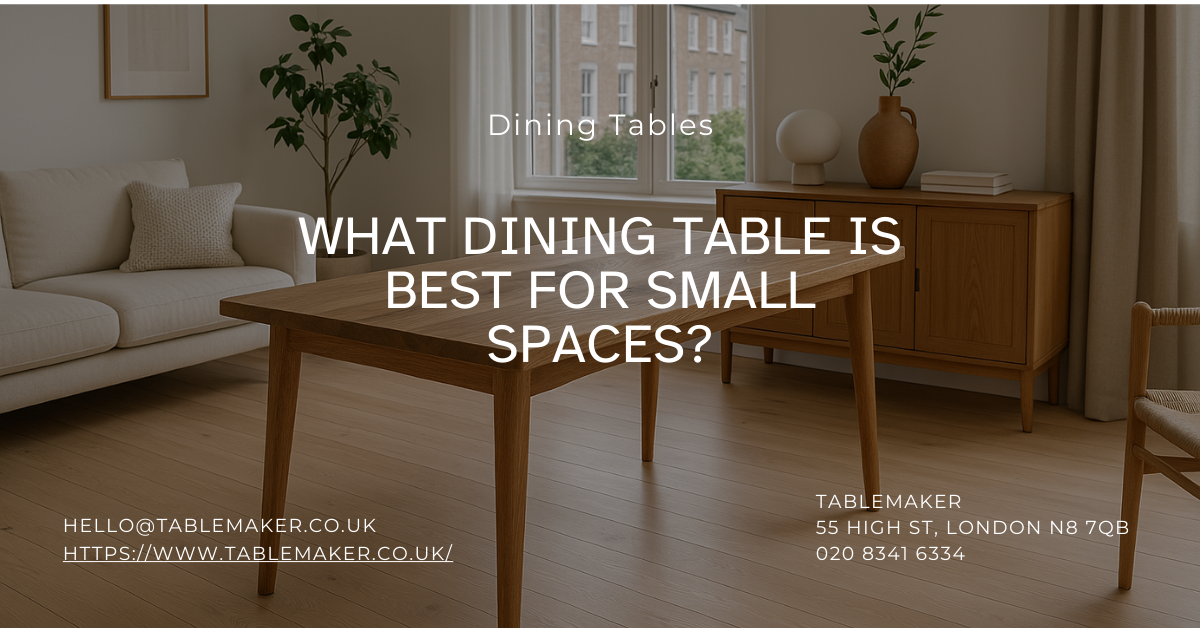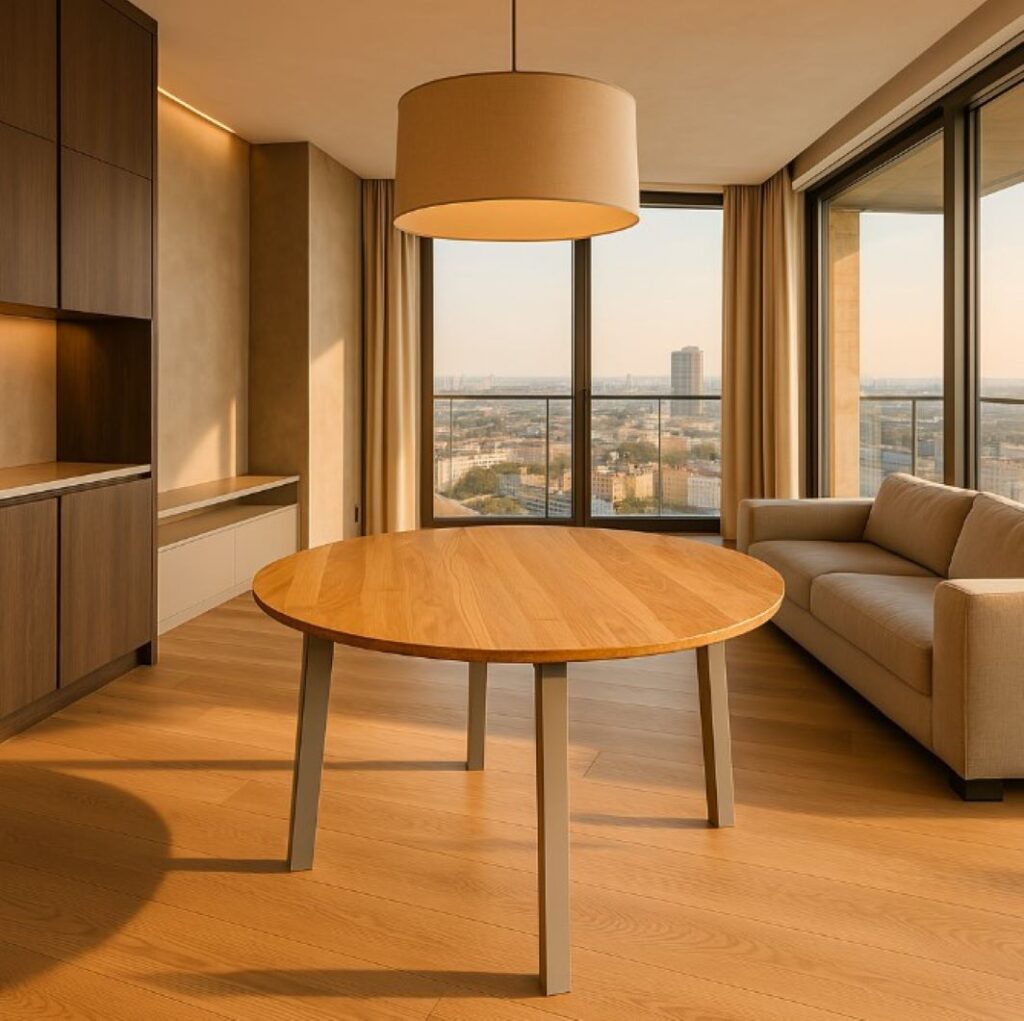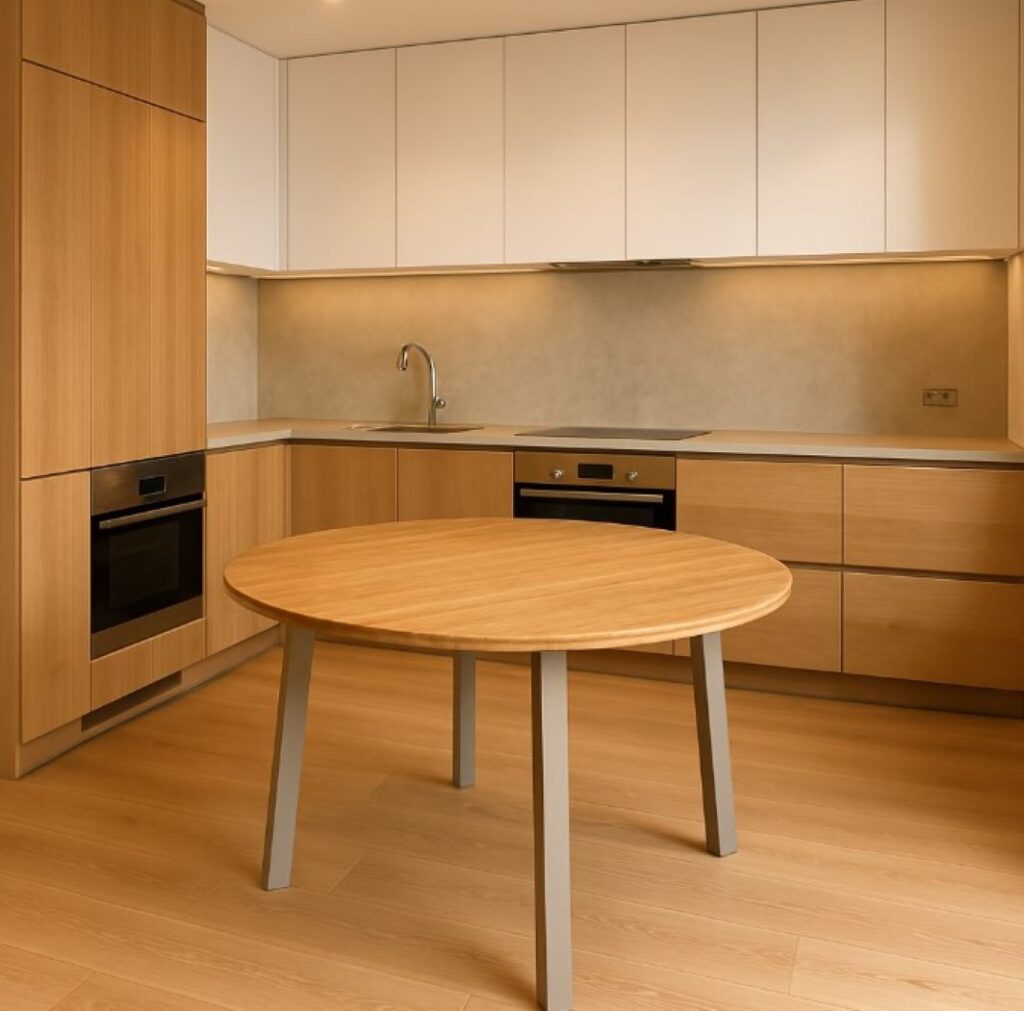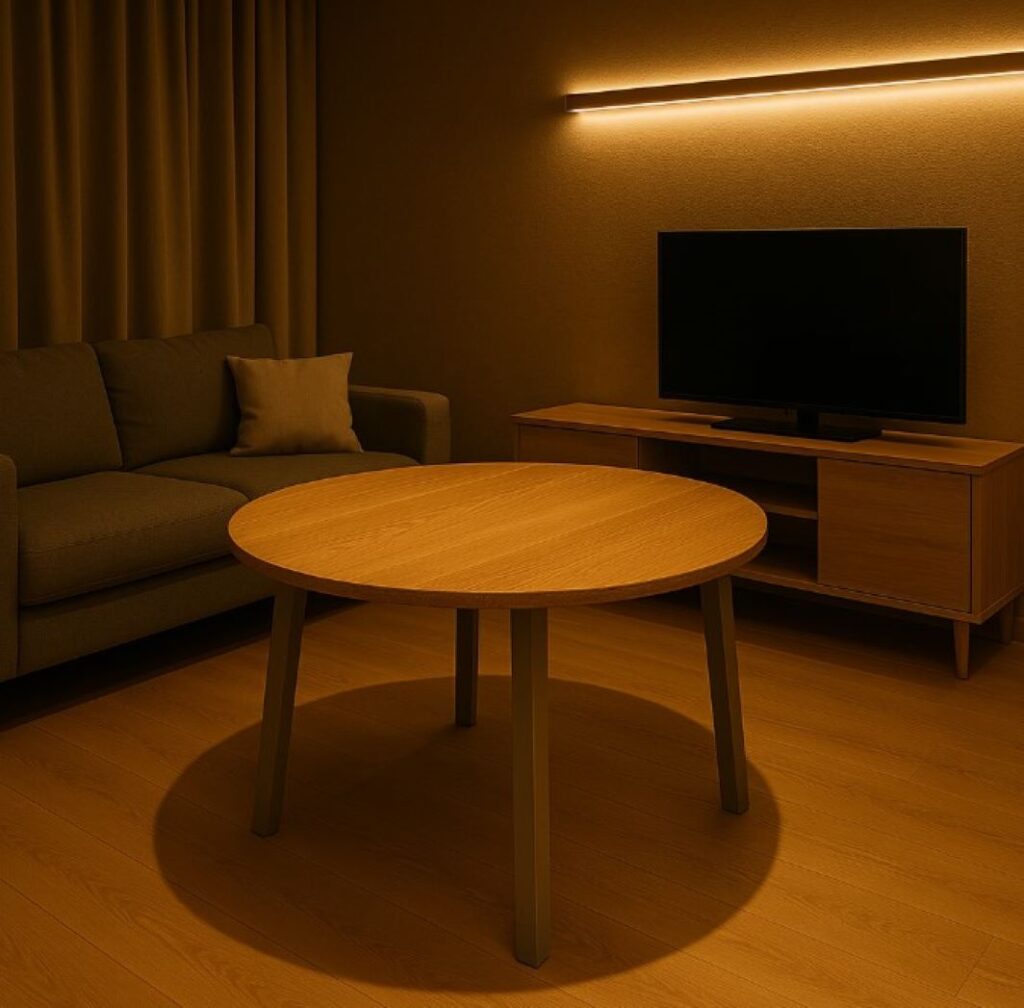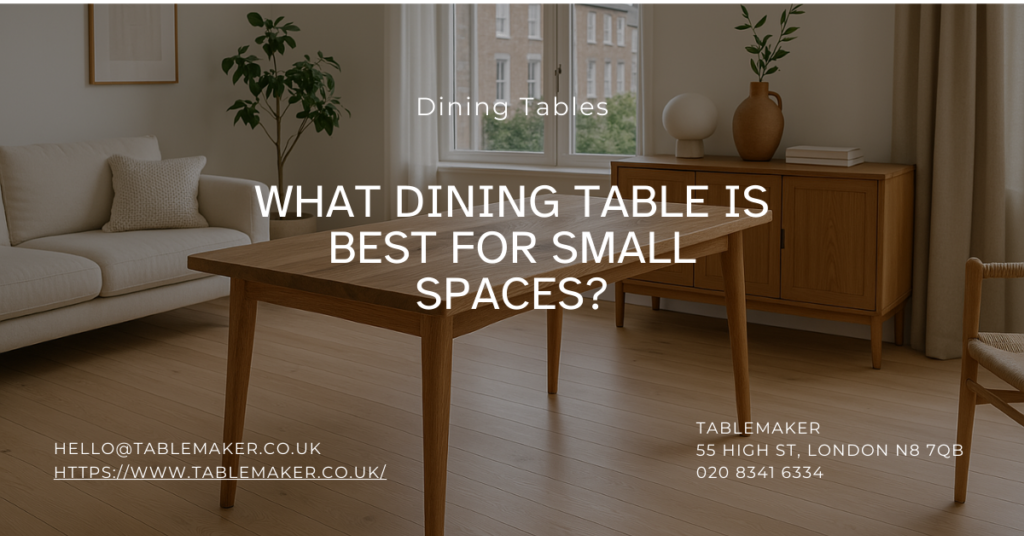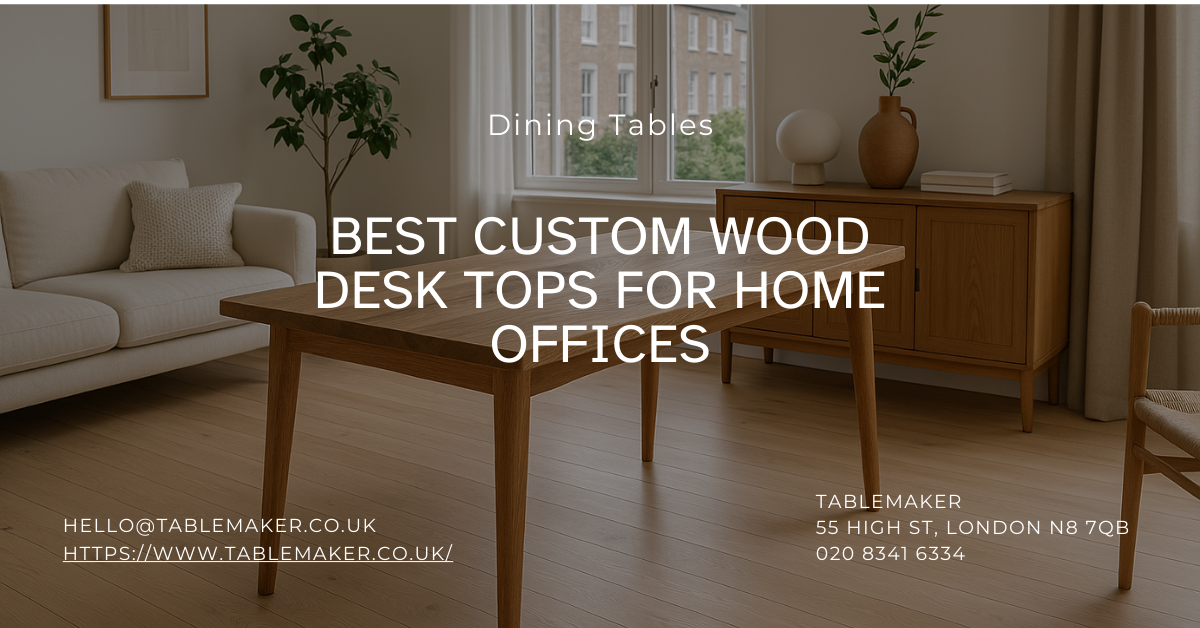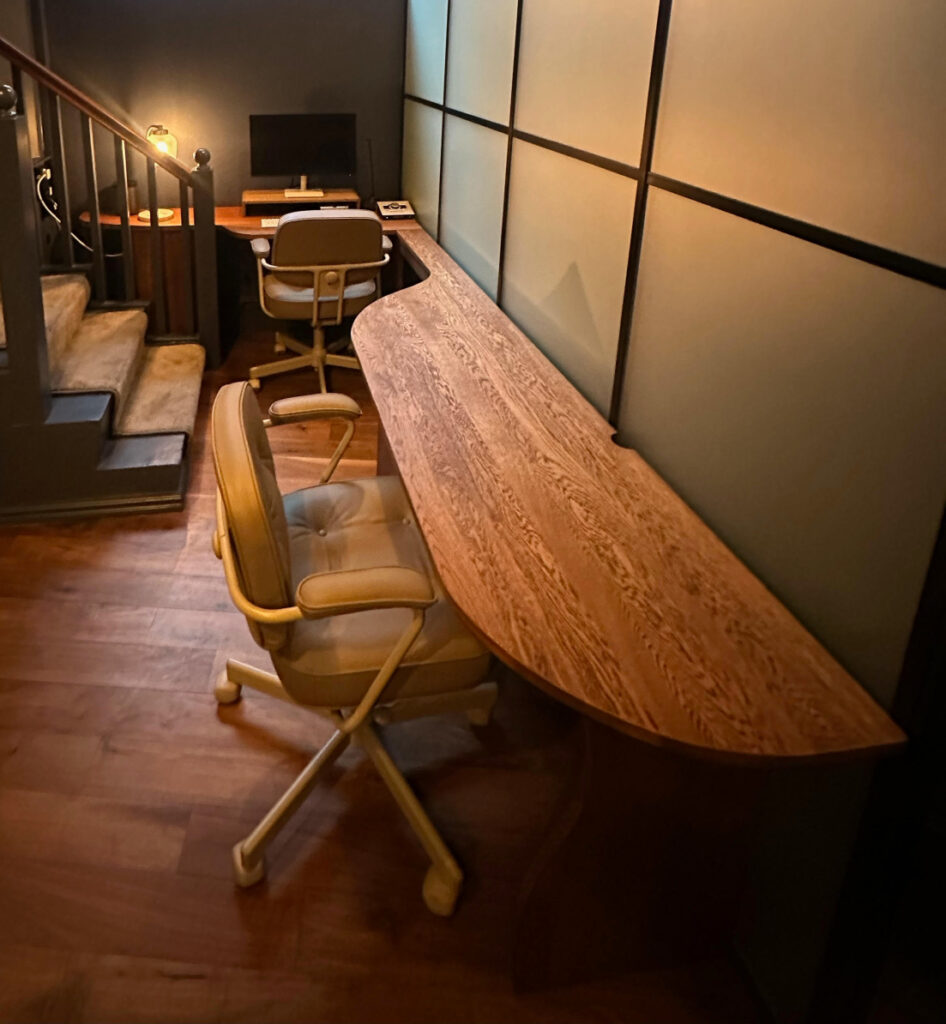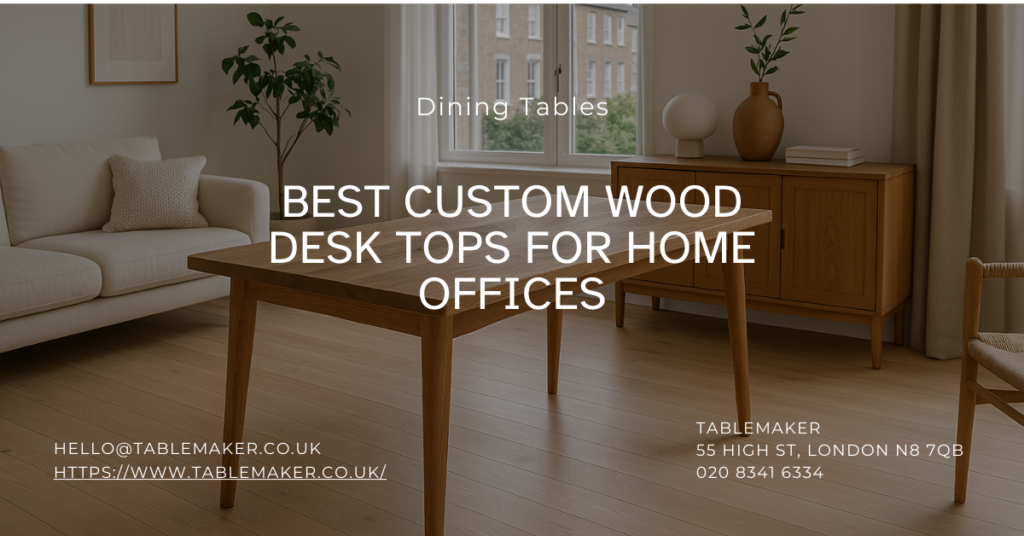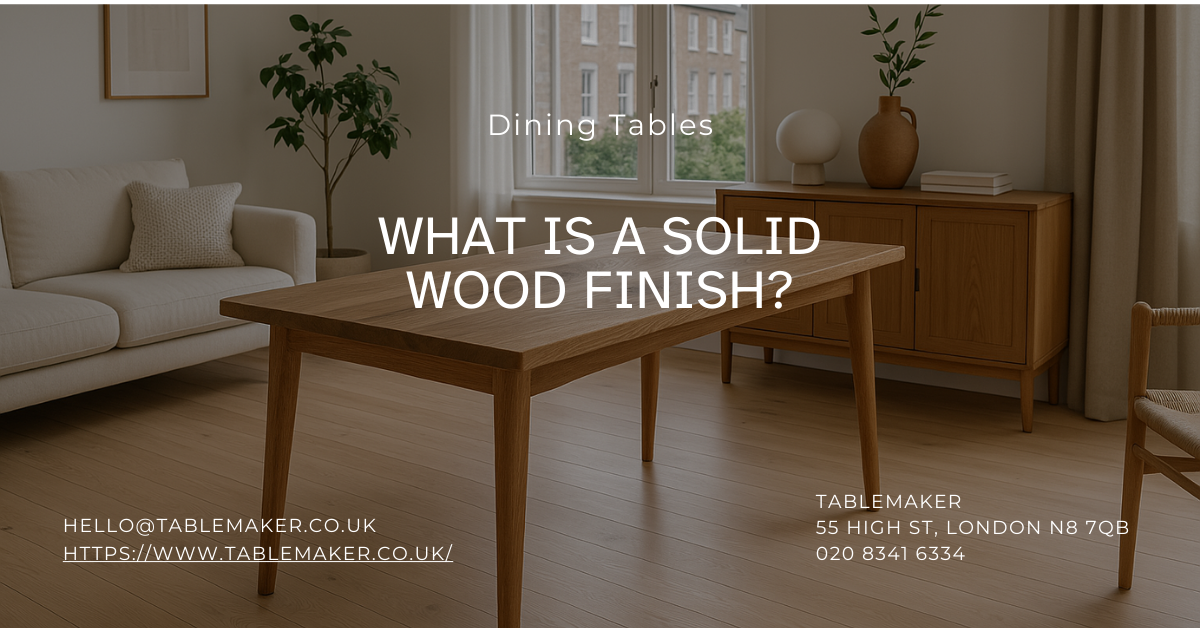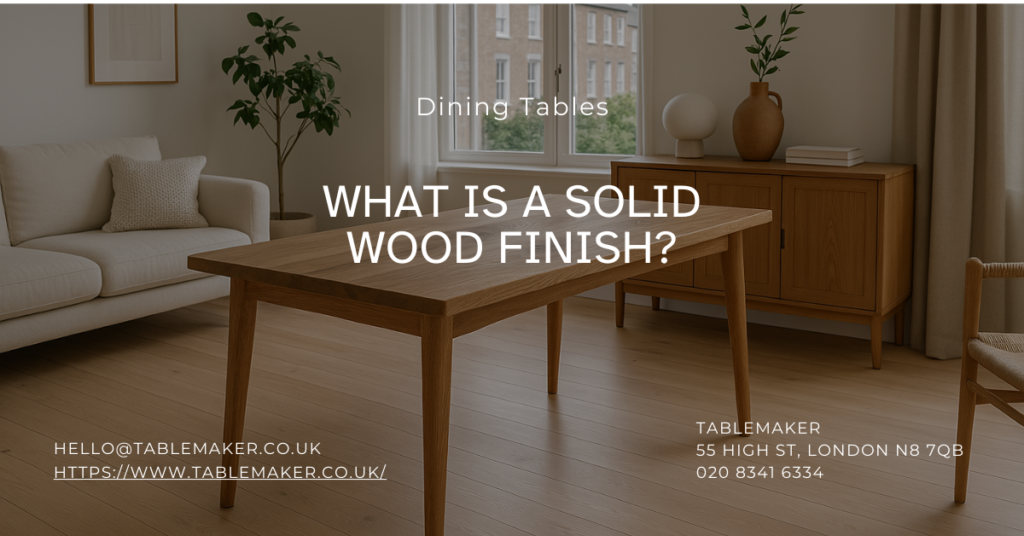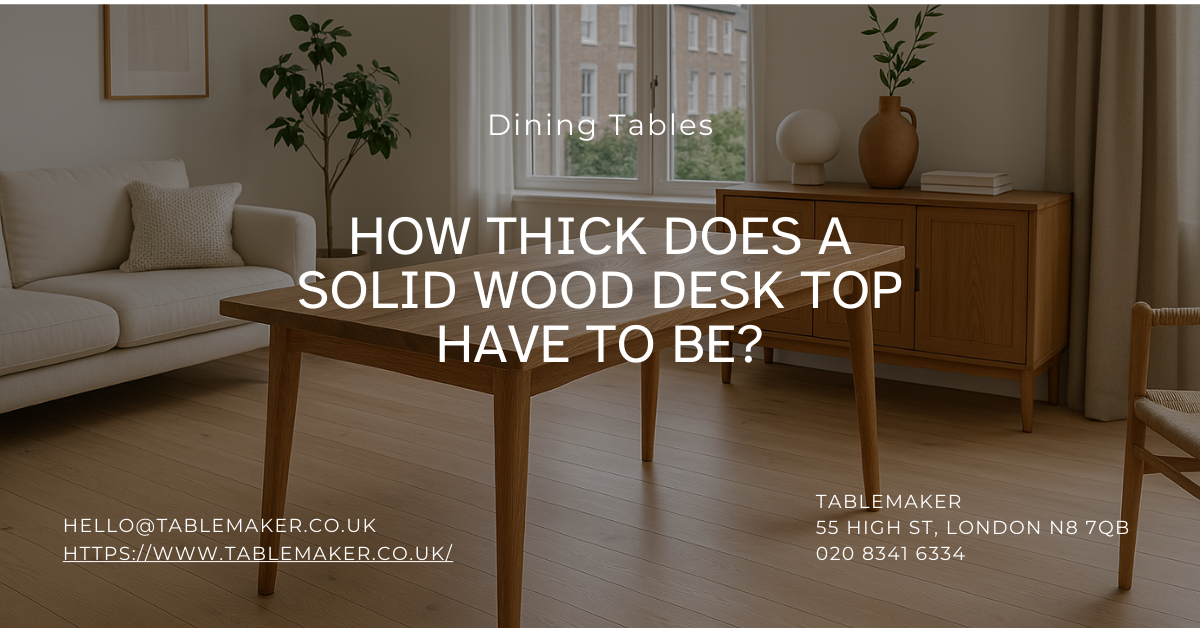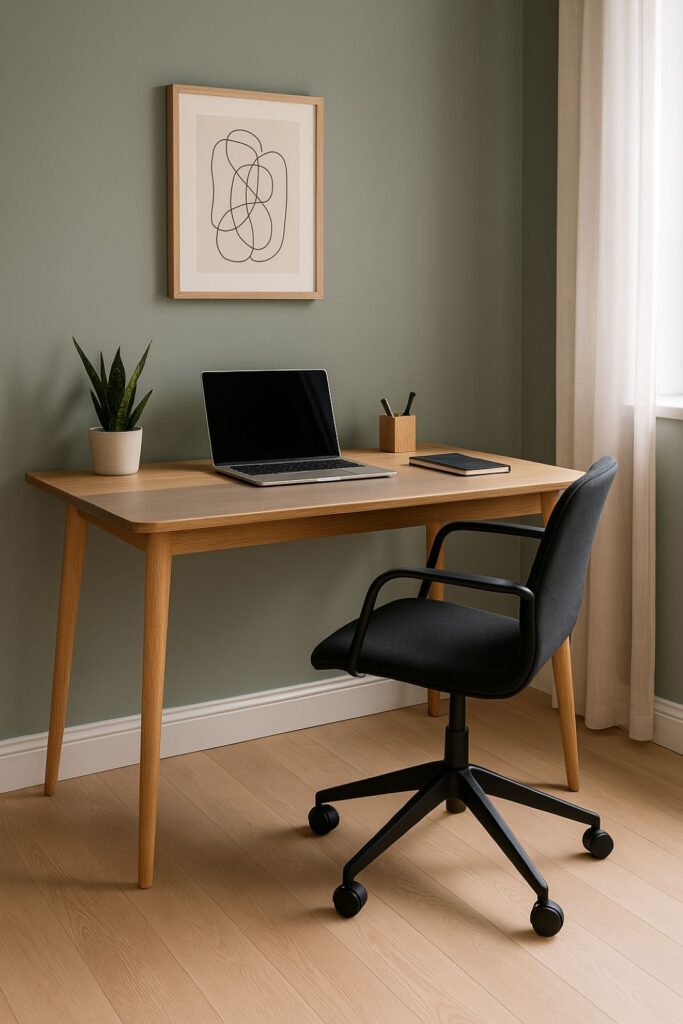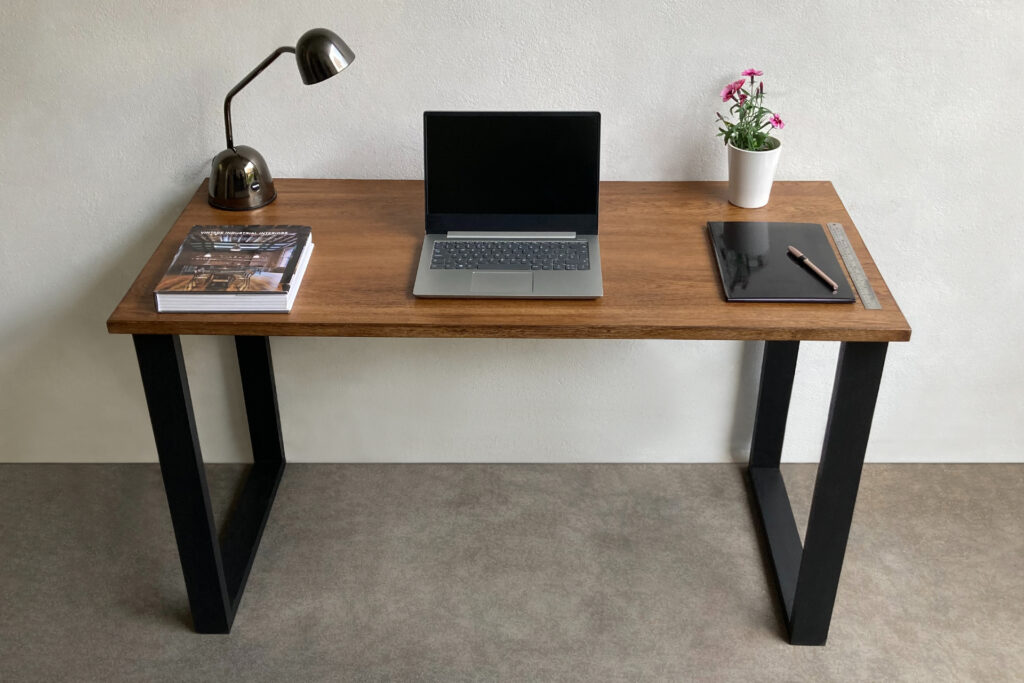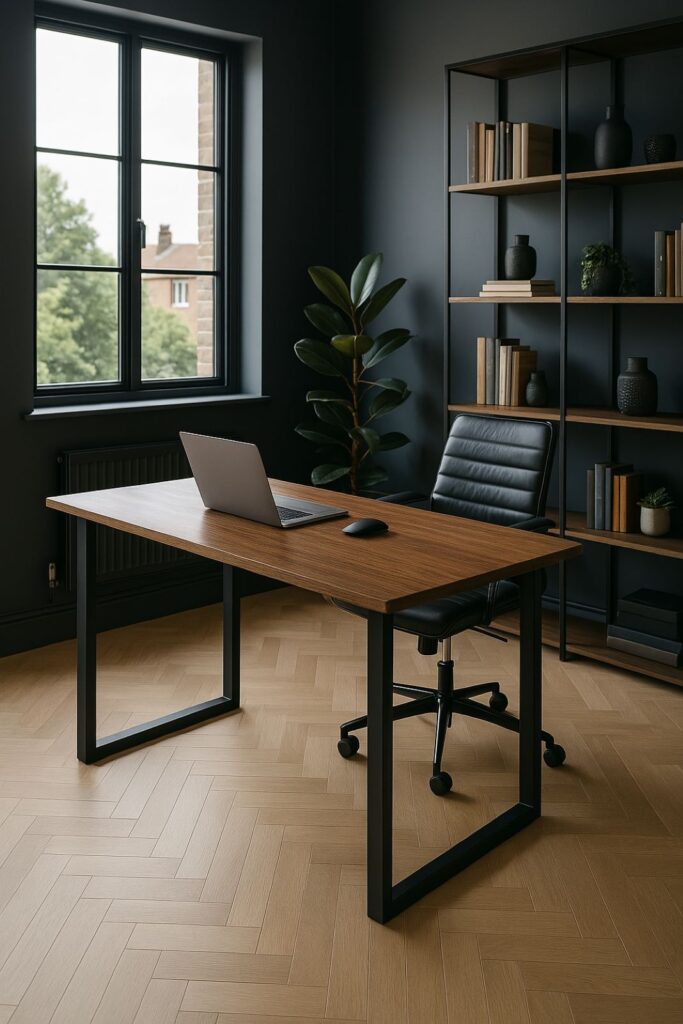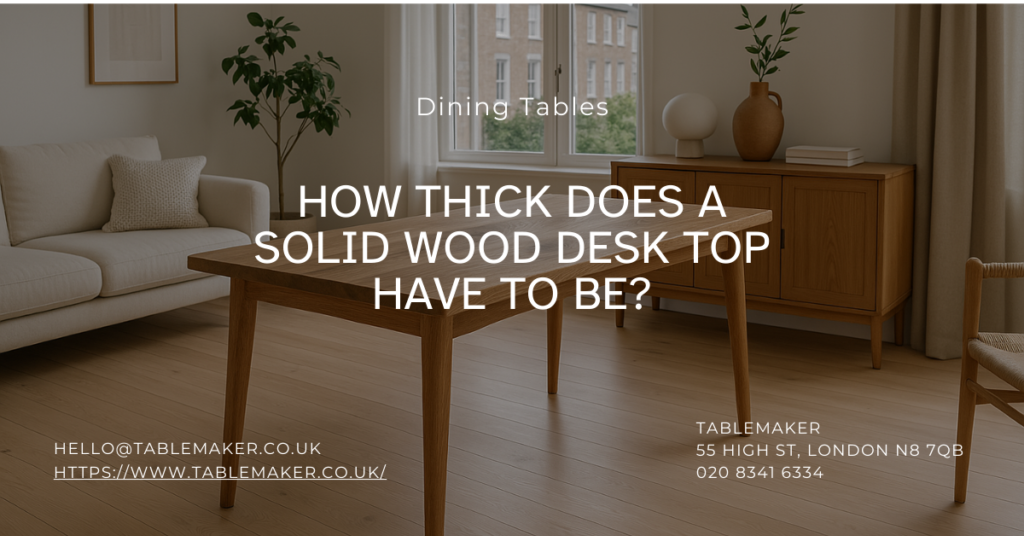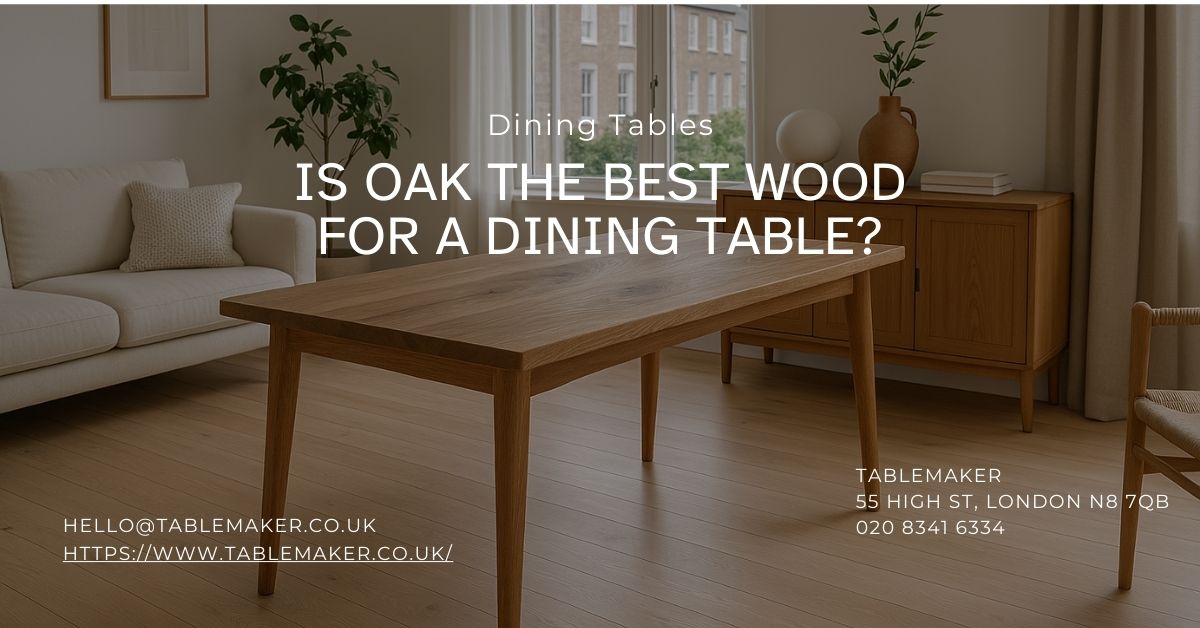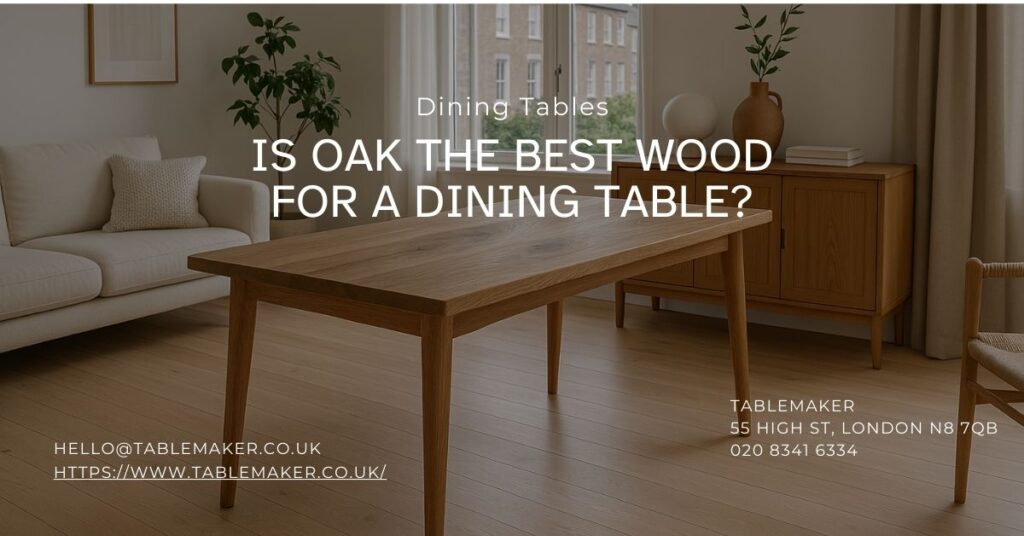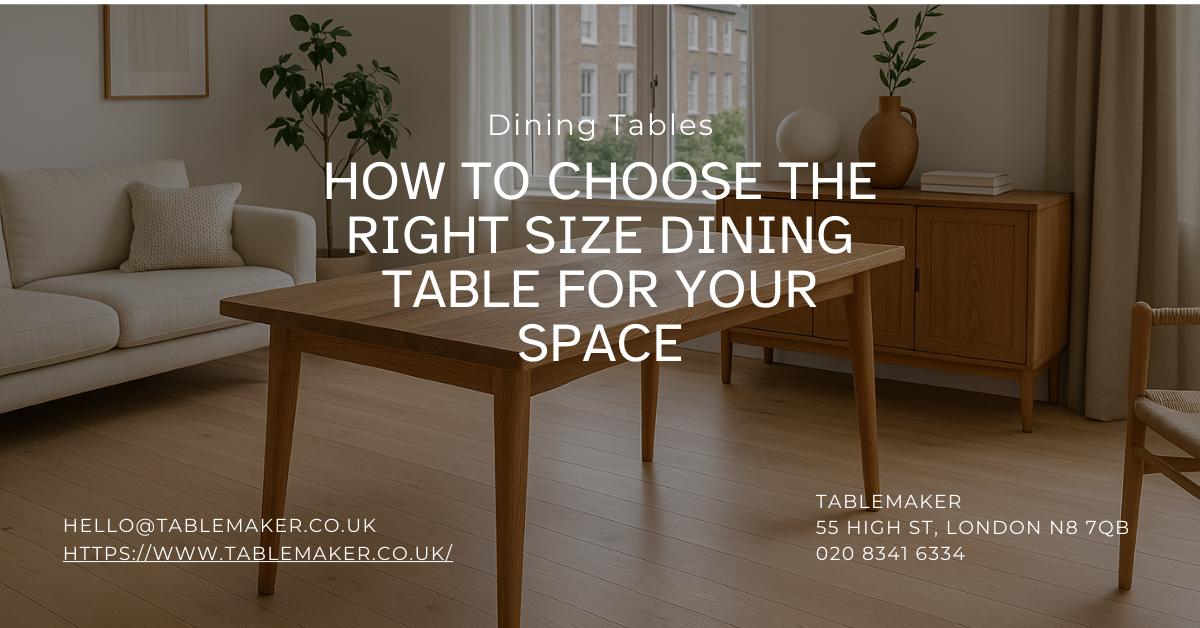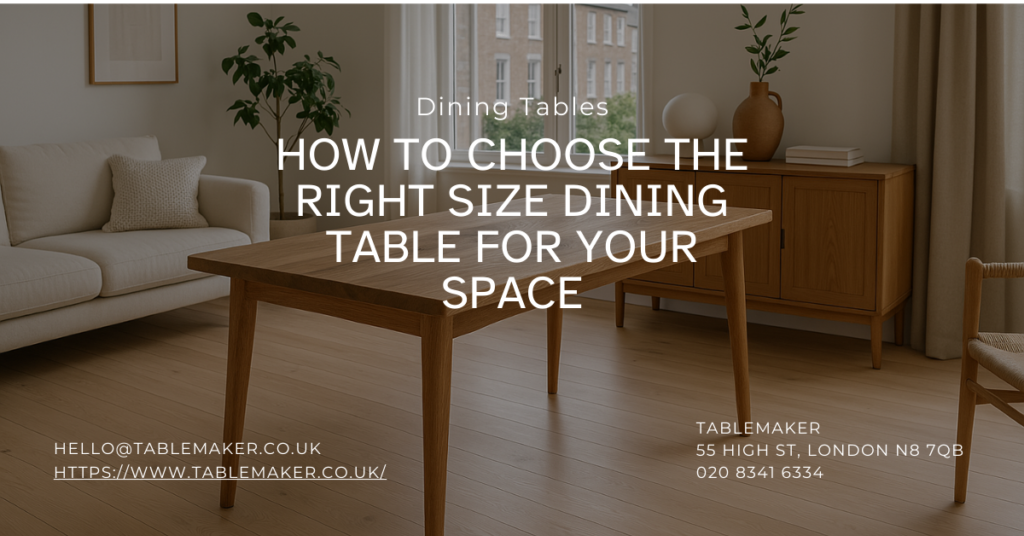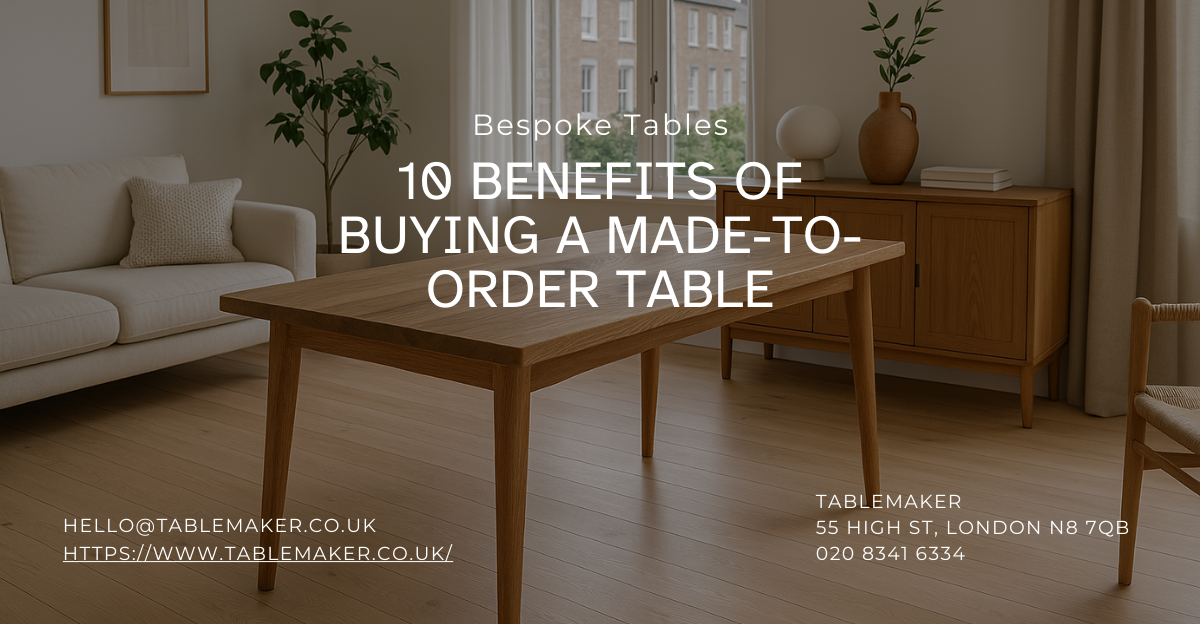
10 Benefits of Buying a Made-to-Order Table
What Are the Key Advantages of Buying a Made-to-Order Table in the UK?
A made-to-order table provides the rare opportunity to shape furniture around your specific needs, lifestyle and home environment. From accurate dimensions to a hand finished look, made-to-order furniture gives British homeowners the chance to avoid compromise. Rather than adjusting to generic sizes or mass market aesthetics, buyers can personalise each detail, from timber choice to table leg style, and get something that suits their family, space and taste. Custom tables also offer advantages in durability, support for the local economy, sustainability and long term value. With skilled production at its core, a made-to-order table is more than furniture. It becomes part of the home’s identity.
In this article about made-to-measure tables, we have covered
- Designed for Your Space and Lifestyle
- Expressing Your Personal Style
- Made in London by Experienced Furniture Makers
- Built to Last with Hardwearing Materials
- Sustainable and Responsible Furniture
- Function That Fits Your Life
- How Do Made-to-Order Tables Improve Everyday Living?
- A Purchase That Feels Personal
- Long Term Value and Return on Investment
- Does a Custom Table Add Character to Your Home?
- Visit Us by Appointment
1. Designed for Your Space and Lifestyle
Accurate Dimensions for Any Room
British homes vary from Victorian terraces and Georgian townhouses to modern flats and converted barns. A made-to-order table can be built to fit the exact measurements of your room, whether it is an open plan kitchen or a compact dining nook. Designing furniture around your home layout ensures comfort, efficient use of space and a calmer visual balance, especially in busy family homes or smaller London flats.
Practical Living Features That Make a Difference
Beyond size, custom made tables respond to how you use the space. Need a dining table with concealed extension panels? Or integrated drawers for table linen? These choices can be part of the original design, unlike shop bought furniture that forces you to adapt. Small changes in dimensions or layout create more useful everyday living. According to a 2024 YouGov survey, over 61 percent of UK respondents said they value functionality just as much as style when choosing furniture.
2. Expressing Your Personal Style
Choosing Materials and Details That Suit You
Whether you prefer a clean modern finish in ash or a farmhouse aesthetic in oak, you choose the tone and texture that reflects your home. This includes the edge profile, surface grain, leg shape and protective finish. Everything is specified to match your style without forcing you into generic catalogue choices.
Blending with Interior Themes
From Scandinavian simplicity and industrial loft looks to classic British country style, custom tables integrate with your home’s design. They provide a lasting focal point that evolves with your décor rather than needing to be replaced. A made-to-order table becomes part of the visual rhythm of your room.
3. Made in London by Experienced Furniture Makers
Supporting Local Makers and British Industry
Each Tablemaker table is built by experienced furniture professionals in London using time honoured joinery methods. Buying local supports jobs and communities, while reducing the carbon cost of importing mass produced furniture from abroad.
Working with Makers You Can Speak To
Local production means a closer connection with the people making your furniture. If you want to tweak the design, see finish samples or discuss delivery access, it is simple to arrange. This level of service is hard to match with national chains.
Pro Tip: Always measure the space around your dining table, not just the tabletop. You’ll need at least 60cm of clearance on all sides to allow for seating and movement.
4. Built to Last with Hardwearing Materials
High Quality Timber for Longevity
Custom tables use durable hardwoods like European oak, black walnut and ash, selected for their structural strength and natural beauty. These timbers respond well to finishing, are easy to maintain and improve in appearance as they age.
Designed for Daily Use
From meals and remote work to board games and family events, your table sees regular action. Made-to-order designs are created for this. Jointing methods such as mortise and tenon or dowel fixings give strength. Finishes are chosen for resistance to spills, scratches and heat. This gives peace of mind for long term use.
5. Sustainable and Responsible Furniture
Ethically Sourced Materials
Timber used by Tablemaker is always certified from responsible sources or comes from salvaged stock. This means it is traceable and managed with environmental protection in mind. The UK Furniture Industry Research Association (FIRA) states that over 70 percent of consumers in the UK now consider sustainability when buying furniture.
Furniture That Reduces Waste
Unlike flat pack models that are made in bulk, made-to-order tables are produced one at a time. There is no dead stock or overproduction. Designs are made to last, meaning fewer replacements and less waste. That supports a lower carbon lifestyle and a more circular economy.
6. Function That Fits Your Life
Flexible Design for Modern Homes
Whether you need an extending dining surface for guests, or a compact table with added storage for a smaller kitchen, these requirements are built into the design. It gives you a table that truly works in your home, day to day.
Dual Use and Multi Function Options
Many clients ask for tables that serve more than one role. A kitchen table might double as a work desk. A hallway table might also store keys and post. These practical choices are simple to include from the start, instead of making do with a compromise later.
Pro Tip: When choosing wood, consider how much natural light the room receives. Lighter tones like ash brighten darker rooms, while darker tones like walnut bring richness to light filled spaces.
7. How Do Made-to-Order Tables Improve Everyday Living?
Designed Around Real Use
Standard table sizes are often too wide, too short or poorly balanced for your room. A made-to-order table allows you to get the height, width and spacing just right. You also have control over wipeable finishes, leg clearance and footroom so everything feels natural.
Furniture That Makes Space Feel Better
In homes where rooms have to work harder, like an open plan area or a flat share, furniture has to be smart. Made-to-order tables help you use space efficiently. Whether that means creating flow between kitchen and living room, or finding storage space underneath, it all helps the home feel less cramped.
8. A Purchase That Feels Personal
Clear Support Throughout
Ordering a made-to-order table does not have to be complicated. The process is friendly and straightforward. You explain how you want the table to work, and Tablemaker will offer layout ideas, material choices and delivery advice. You are never guessing. It is a conversation with experienced people.
Furniture That Has Meaning
Clients often say the table means more because they had a hand in choosing the features. That connection matters. It becomes something your children remember. A made-to-order table often stays in a family for decades. It is not throwaway. It becomes a part of daily life.
9. Long Term Value and Return on Investment
Better Quality Means Fewer Replacements
Mass produced furniture is designed for price and speed. It often uses particleboard and plastic components that weaken with use. A solid wood made-to-order table from Tablemaker resists wear, holds its structure and maintains its value.
Higher Value with Time
As the table ages, it builds a history of family life. It gains patina, not just wear. This character adds warmth and personality. And should you choose to move or redecorate, the table can often be refinished or reused rather than discarded. That gives long term value that catalogue furniture rarely provides. British consumers are increasingly seeking furniture that can be repaired and passed down, with market analysts noting a 38 percent rise in demand for heirloom quality furniture since 2022.
Request a Sample Finish Pack
Want to see and feel the quality? Order our wood and finish samples to begin your design with confidence.
Get Personalised Advice10. Does a Custom Table Add Character to Your Home?
A Visual Centrepiece That Draws People In
Every home has a place where people gather. A made-to-order table becomes that point. It can anchor an open kitchen, add warmth to a dining area or give purpose to an underused room. Its design helps tie a space together.
A Piece That Speaks for Your Style
From timber selection to surface finish, each detail reflects choices you made. Unlike mass market furniture, which feels anonymous, a made-to-order table feels like it belongs. It does not shout, but it does say something honest about your home.
For more information on how to start a design that fits your home, visit our custom table consultation page or explore examples of our handcrafted dining tables to see what’s possible.
Visit Us by Appointment
Looking to see the quality of our made-to-measure tables in person? Book an appointment to visit our North London showroom, where you can view our materials, finishes and design examples up close. We’ll take the time to understand your space, needs and preferences so we can help create a table that fits your life perfectly.
Showroom Address:
Tablemaker
55 High St, London N8 7QB
Phone: 020 8341 6334
Email: hello@tablemaker.co.uk
View us on Google Maps
Appointments are available Monday to Saturday. Please contact us to arrange a suitable time. We look forward to meeting you.
Start Your Custom Table Design Today
Book a personal consultation and begin designing a table that fits your space, style, and life.
Start Your Custom OrderTablemaker
55 High St, London N8 7QB
02083416334
HVQM+58 London

